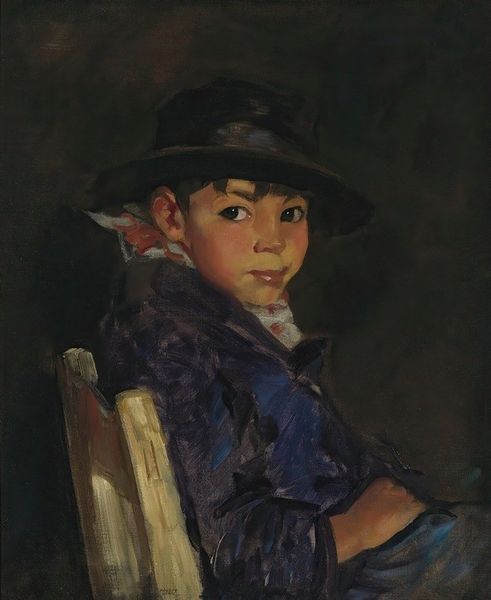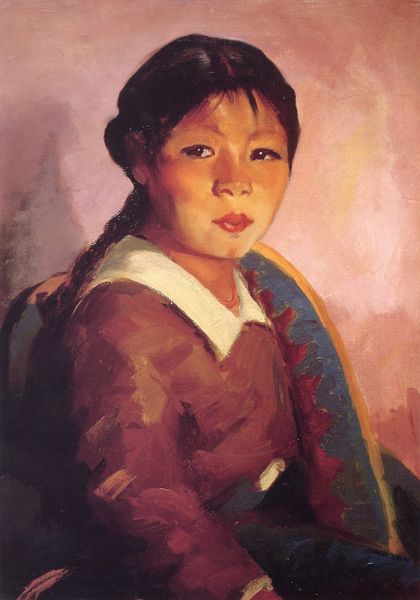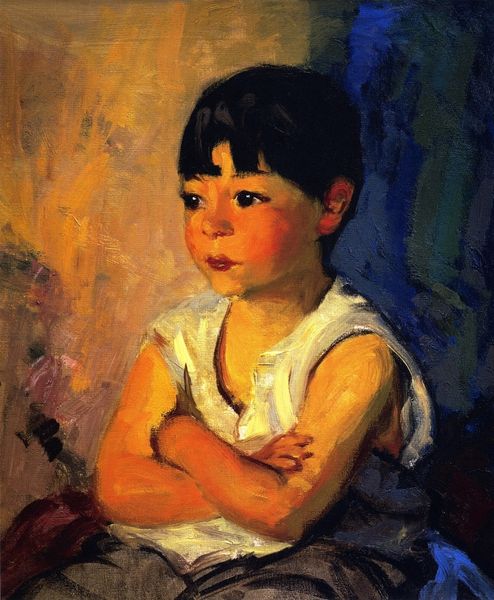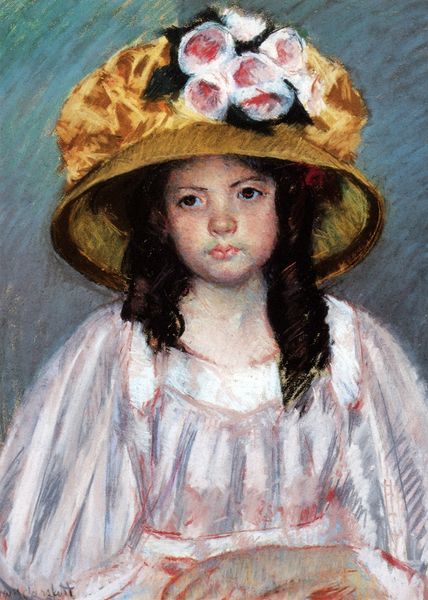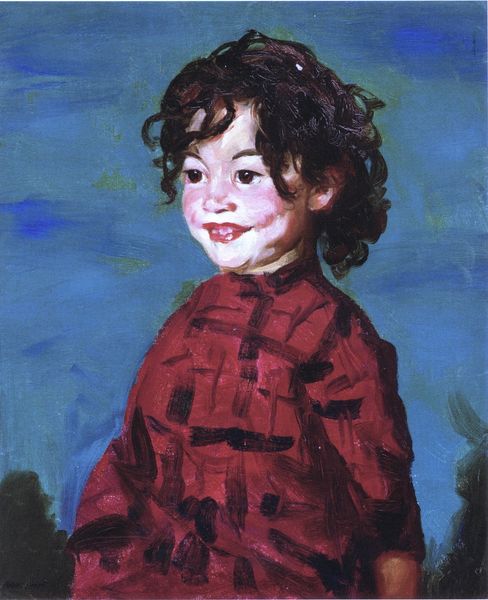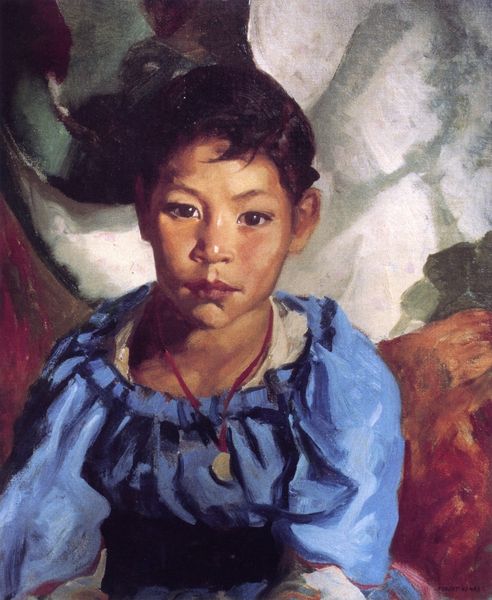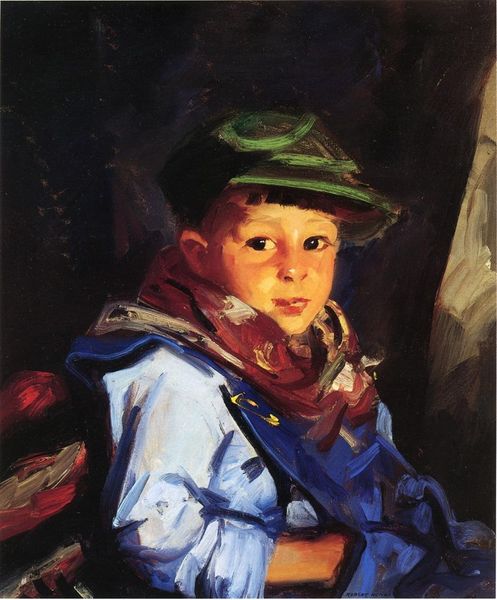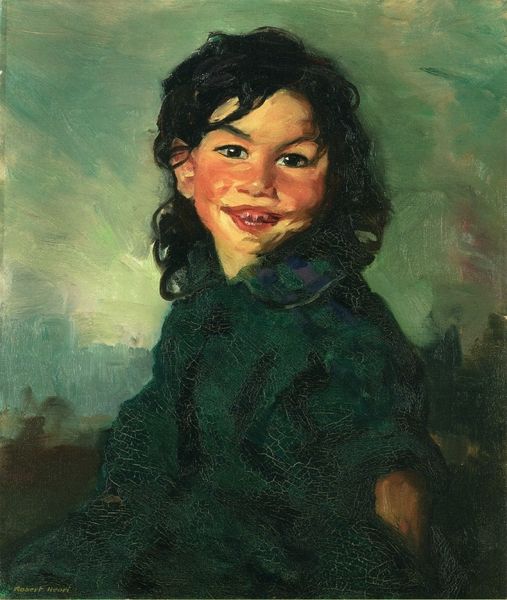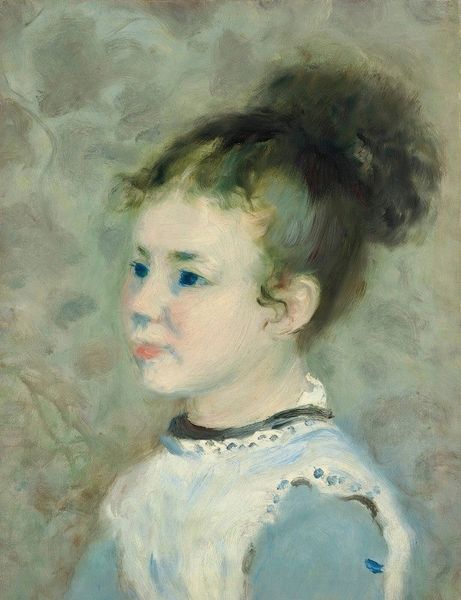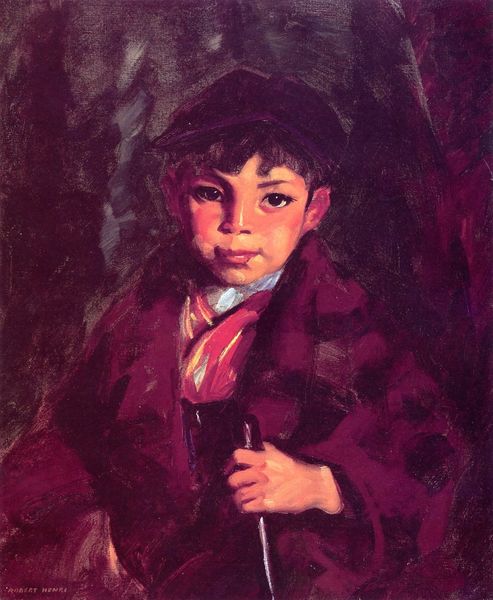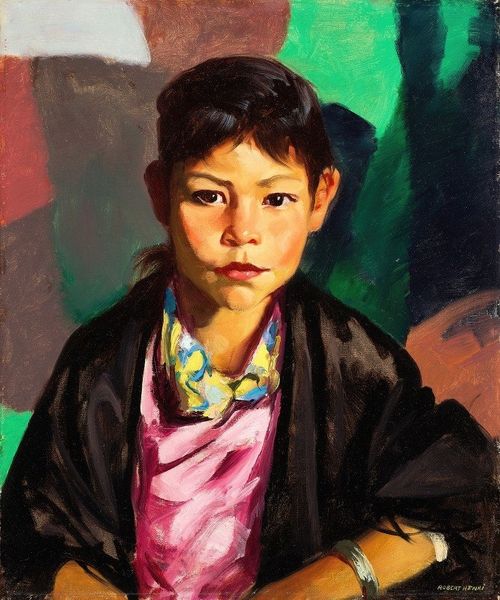
painting, oil-paint
#
portrait
#
painting
#
oil-paint
#
oil painting
#
ashcan-school
#
portrait drawing
#
genre-painting
#
portrait art
#
realism
Copyright: Public domain
Curator: Let’s take a look at Robert Henri’s 1916 portrait, “Juan (also known as Jose No. 2, Mexican Boy).” It’s an oil painting, fairly small in scale. Editor: My first impression? Quiet intensity. That gaze holds you, doesn't it? Almost challenging. And that broad hat brim casting shadows...it feels both intimate and a bit distant. Curator: Absolutely. Henri was a key figure in the Ashcan School, remember. A group focusing on depicting everyday life, particularly working-class individuals, and his portraits are interesting artifacts to think about social class in this era. There's something deeply compelling in this depiction of an ordinary individual that transcends mere documentation. Editor: Right, the "everyday" is crucial here. He's not idealized, is he? Look at the brushstrokes—thick, almost impatient. There's a raw quality to the rendering, particularly the hat. The light is doing fascinating things with the kid’s face. Curator: The application of paint is indeed crucial. There is a wonderful contrast here between the realism he employs in depicting the boy's face, in contrast with the far more gestural, textural rendering of his clothes, like with those daubs of impasto describing that simple blouse. It prompts us to think about how Henri may have worked with different methods based on how he may have viewed the importance of each material represented. Editor: Which really puts the focus squarely on the kid's face, his gaze. It's as though Henri is saying, "Pay attention to this person, to his presence.” The child may represent a narrative of work, of the lives that have made so many artifacts possible in the city at that time, like the construction of roads, rails, and buildings that define modern life. Curator: It's a powerful gesture, especially considering the period's prevailing social inequalities. Now, considering its probable exhibition venue at the time, we can ponder what these genre paintings might mean in different consumption environments for different spectators with diverse cultural and socioeconomic backgrounds. Editor: Right, to contemplate the ways an everyday life and scene such as this one of this particular Mexican Boy might have evoked many reactions during this particular time. The context matters just as much. Makes you wonder, what would Juan himself think, seeing his portrait on display so many years later? Curator: Indeed. Examining it now reminds us of the labor involved, not just in the painting's creation, but in the subject's life, too. Editor: Absolutely. It is more than just oil on canvas; it's a conversation starter, still resonating with its quiet, yet intense call for attention to overlooked stories.
Comments
No comments
Be the first to comment and join the conversation on the ultimate creative platform.
